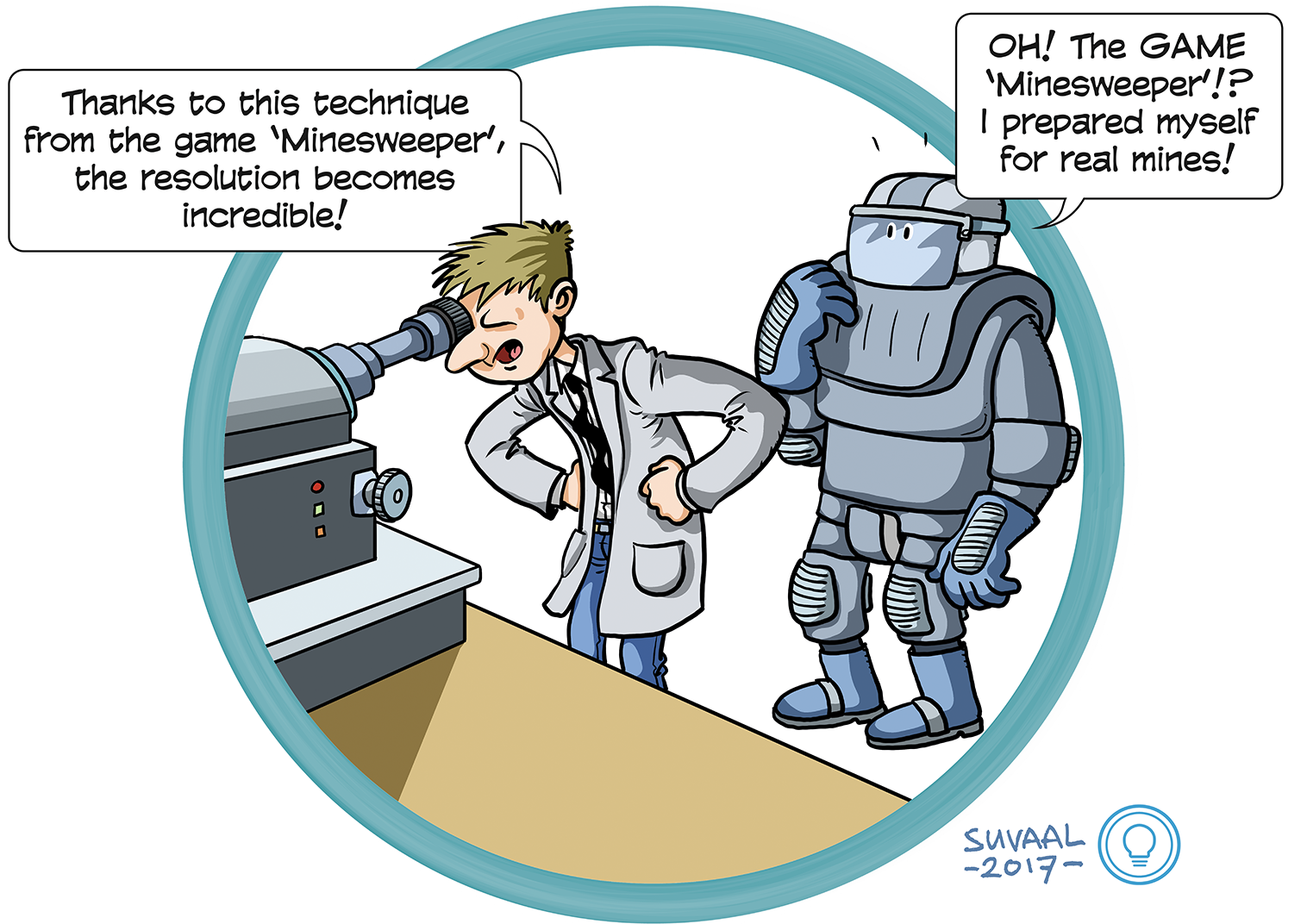Super-resolution in an integrated correlative light and electron microscope
Themes: Life Science & Health

Proof of principle

A TRL is a measure to indicate the matureness of a developing technology. When an innovative idea is discovered it is often not directly suitable for application. Usually such novel idea is subjected to further experimentation, testing and prototyping before it can be implemented. The image below shows how to read TRL’s to categorise the innovative ideas.
Why?
Using a minesweeper-like approach, this research enables super-resolution in integrated light and electron microscopy. This is especially interesting for biologists because fluorescent labels can be seen in the context of their ultrastructure with an order of magnitude higher resolution.
How?
An electron beam scans a sample pixel-wise. If it hits a fluorescent label, the light microscope detects a decreased light intensity. Combining this with the known location of the electron beam indicates the exact location of the fluorescent label.
When?
A proof of concept achieved a 100 nm resolution. Further improvements in experimental approaches, noise reduction and data interpretation have the potential to result in a 50 nm resolution.
Aditi Srinivasa Raja MSc
